New Beginnings
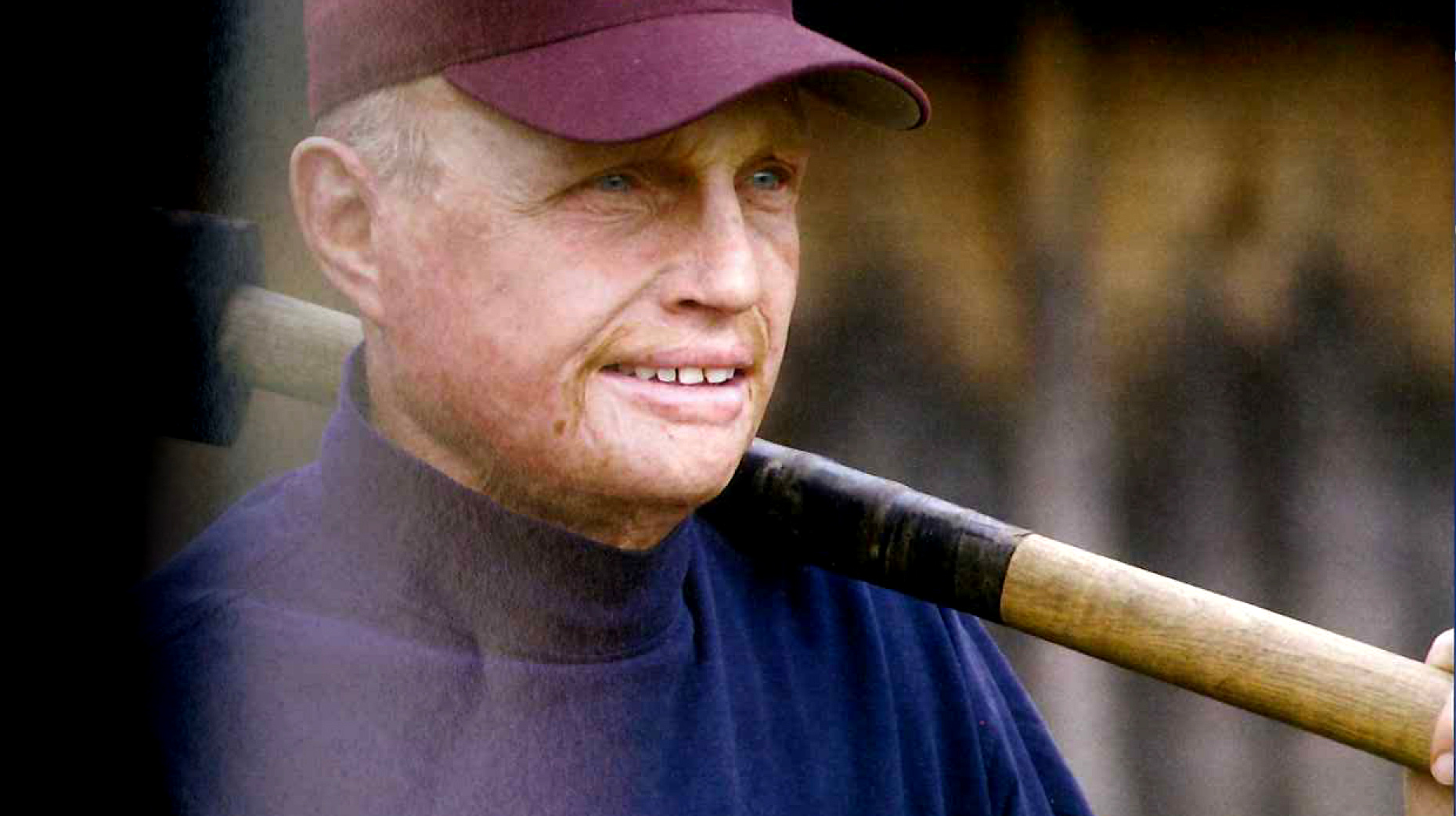
By Alison Bour
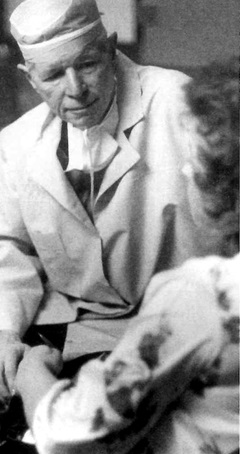 It’s often said the only thing worse than being severely burned is the long, slow and painful recovery from the injury. Patients and their families who are treated at The Burn Center at
Miami Valley Hospital soon learn it will take a large team of highly skilled professionals working around the clock to bring healing to the devastating experience of being burned.
It’s often said the only thing worse than being severely burned is the long, slow and painful recovery from the injury. Patients and their families who are treated at The Burn Center at
Miami Valley Hospital soon learn it will take a large team of highly skilled professionals working around the clock to bring healing to the devastating experience of being burned.
Sidney Miller, MD, director of The Burn Center at Miami Valley Hospital, said the treatment of burns is so complex, so labor-intensive that the only way it can be carried out is through a hospital unit dedicated solely to burn victims.
“Everybody on the team takes responsibility for all areas of treatment throughout the day,” says Dr. Miller. That team includes not only surgeons and nurses buy also psychologists, social workers, dieticians, physical and occupational therapists, chaplains, support groups and even previous burn patients and their families.
The Burn Center at MVH was launched in 1974 by Dr. Robert Finley who saw the need for consistent care of burn victims by the same doctors and staff. The John A. Thiele Foundation provided funding for the original burn treatment room. Previously, burn patients would be treated in various parts of the hospital and by different attending doctors and nurses.
Over the years, MVH has modified and improved its approach to treating burns and – in March of 2005 – will open a brand new burn unit designed to handle all facets of care in one location.
The Burn Center also handles complex wound care for patients who have not been burned as this time-consuming treatment is difficult to provide in other parts of the hospital.
“The new unit will allow us to offer the utmost in efficient and constant care,” adds Kevin Bailey, MD, associate director of the center. “We can better coordinate the efforts of all the team members.”
Beginning to Heal
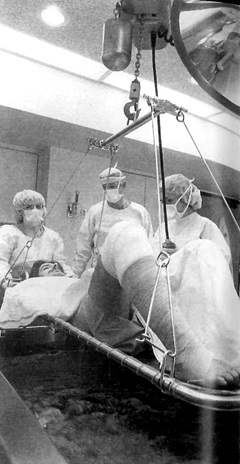 Burn victims usually go to the emergency room first as they frequently have associated traumas. After an initial assessment, a burn patient may go directly to intensive care or to the Burn Center to begin initial wound care.
Burn victims usually go to the emergency room first as they frequently have associated traumas. After an initial assessment, a burn patient may go directly to intensive care or to the Burn Center to begin initial wound care.
Burns are categorized by their degree. Patients with first-degree burns, such as those received from overexposure to tanning beds, or bad sunburn, can often go home shortly after treatment. Second-degree burns, also called partial thickness burns, require antibiotic soaks and biosynthetic dressings to stop fluid loss and prevent infection.
Third-degree burns – known as full thickness burns – require skin grafting. This procedure is conducted as soon as possible, sometimes within the first 48 hours. “Years ago,” says Dr. Miller, “grafting was performed after the burned skin came off on its own. However, since this dead skin can be the source of infection, the quicker it is removed and replaced, the better the chance of a patient’s recovery.”
Grafting is performed using the patient’s own cultured skin frown in a lab as well as cadaver skin. Artificial skin can also be used.
“We start physical therapy almost from the day of admission,” adds Dr. Miller. As burned skin heals it needs to be constantly exercised to prevent tightening and allow as full a recovery as possible.
Burn patients also need constant management of their caloric intake. A body recovering from severe burns can require up to 6,000 calories per day for as long as three months. Since burn care at MVH is integrated among so many types of professionals, each team member is responsible for closely monitoring treatment orders. In this way, a dietitian might encourage a patient to do his or her exercises. A chaplain might push a burn victim to eat more.
Melora Waltman, BS, RN, is nurse manager of The Burn Center at MVH. Nurses working in this unit must be proficient at general bedside care as well as sophisticated techniques used to treat burns. “The nurse is there 24-7,” she says. “We kind of act as command central.”
The nurses are always on the alert for particular signs that a patient needs new treatment orders. “As things change, we contact the physicians,” says Waltman. “Doctors often make decisions based on our assessment.”
But, successfully treating a patient’s physical injuries is not the whole story. Burn patients also experience dramatic emotional scars, too. They may have lost their home, their job or even a loved one. Between the painful physical care and the injury flashbacks, feelings of depression, grief and loss become overwhelming – and must also be healed.
MVH offers psychological care to burn patients and their families. Support groups often prove helpful and visits from previous burn patients can lift the spirits of burn victims allowing them to see they can and will get better. In addition to treatment in a dedicated unit, better dressings and new knowledge about how the body heals from burns, MVH relies on what Dr. Miller calls a ‘cadre of specialists.’ These surgeons have extensive experience repairing various parts of the body that have been burned, and advancements have also been made to reconstructive surgery techniques.
Before treatment advanced, people who were burned up to 40 percent of their bodies or greater often did not survive. Dr. Miller said now those who receive injury to as much as 70 percent of their bodies can recover and even return to a normal life.
As much as doctors and surgeons are seen as heroes for helping burn victims recover, Dr. Bailey emphasizes he and Dr. Miller are not willing to take the full credit: “It’s the commitment of the whole team.”
Jim VanDeGrift
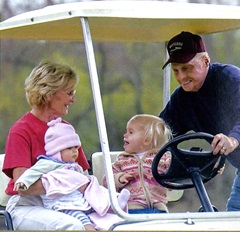 Jim VanDeGrift, a resident of Lebanon was only about a half mile from his home when his life changed forever. After fuel leaked from the tractor he was driving, an explosion occurred and Jim could not get away fast enough; nearly 80 percent of his body
was severely burned.
Jim VanDeGrift, a resident of Lebanon was only about a half mile from his home when his life changed forever. After fuel leaked from the tractor he was driving, an explosion occurred and Jim could not get away fast enough; nearly 80 percent of his body
was severely burned.
Even though he almost died three times, Jim – a former football coach and teacher – remembers little of the first couple of months as his initial treatment required an induced coma. “It was more difficult on my wife and family at that time.”
Because of new knowledge about treating burn victims, Jim survived – though he would have to face many months of grueling treatment to heal his burns and recover lost mobility. Jim says he was fortunate that his hands were not burned although he had to endure skin grafting to his arms, face, shoulders, chest and legs.
A special plastic face mask, made by the use of lasers, allowed Jim’s face to better recover and return more to its original shape. This mask also reduced scarring. Now, seven years later, Jim must still exercise to retain mobility and moisturize his skin half a dozen times a day.
But, Jim has regained most of what he could do before the accident and – though he call his experience horrible – he’s glad he lived to tell about it. For that he credits his faith, the ministry of many people throughout his recovery and the professionals at MVH: “I was strictly relying on others for my life,” he says. “I couldn’t have asked for any better medical care,” says Jim. His wife Rosie agrees, “I’m so glad we ended up at Miami Valley Hospital. “
Iris Bradley
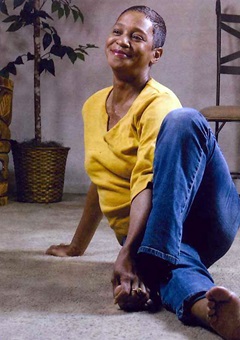 In 2002, Iris Bradley, of Dayton, burned her hip after she fell asleep smoking and was successfully treated at The Burn Center at MVH. But, she could have imagines a year later the same thing would happen.
In 2002, Iris Bradley, of Dayton, burned her hip after she fell asleep smoking and was successfully treated at The Burn Center at MVH. But, she could have imagines a year later the same thing would happen.
This time, she had third-degree burns on 80 percent of her body. After a lengthy stay in the Intensive Care Unit, Iris was moved to the Burn Center to continue treatment. Her care recovery were made more challenging by the fact that she also suffers from Sickle Cell Anemia.
Iris’ daughter and grandchildren were devastated at the news of her accident. Iris was also overwhelmed with depression and, at times, though dying might be better than facing her situation.
But, over time, she learned it was worth it to press on. “Everybody was just so supportive and loving.” Due to her Sickle Cell, Iris must wear a special treatment pump that was also burned. Iris credits the professional team at MVH’s Burn Center with preventing infection, an outcome that can easily occur with burn patients.
Like most burn victims, Iris was treated with skin grafts, some of which utilized a revolutionary new artificial skin. Iris did opt to forego additional surgeries that would have given her more arm movement. She was instead motivated to leave the hospital and return to her schooling at Wright State University where she is pursuing a degree in Humanities, Political Science and African Studies.
At age 51, Iris still has trouble dealing with the scars left by her burns. But, she also credits MVH for her reconstructive treatment: “I’m scarred but not like you would think. The treatments are better now and the doctors know what they are doing.”
And, has she stopped smoking in bed? Even better, she says: “No more smoking, period.”

